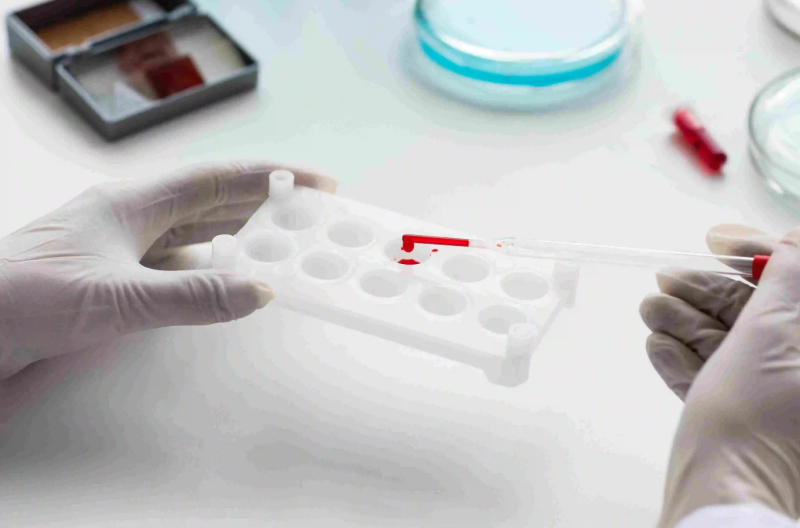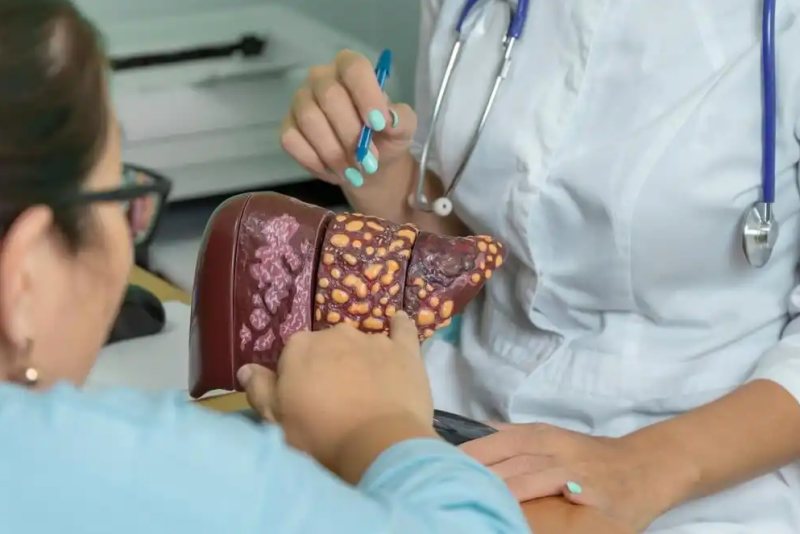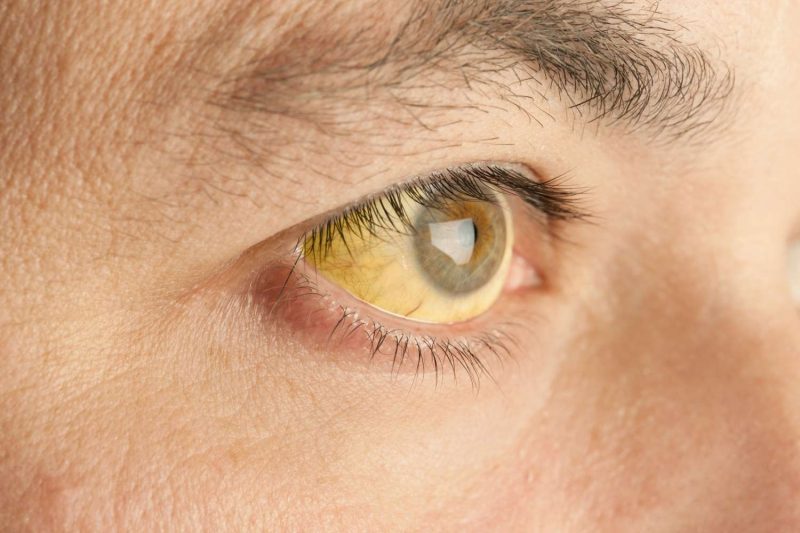 High blood bilirubin can be an indication of bigger problems. It is good to know a little more about this substance to find out.
It is a yellowish component resulting from the degradation of red blood cells, a process generally occurring in the spleen. Under certain circumstances, this molecule can increase its amount, which causes high bilirubin levels in the blood.
When this happens, a picture of jaundice may be triggered in the patient; that is, that person’s eyes or mucous membranes acquire a yellowish hue. If this substance is present in a high way, it is said that hyperbilirubinemia is suffered.
Before explaining in more detail why bilirubin levels rise and how they are treated, we need to better understand what it is.
High blood bilirubin can be an indication of bigger problems. It is good to know a little more about this substance to find out.
It is a yellowish component resulting from the degradation of red blood cells, a process generally occurring in the spleen. Under certain circumstances, this molecule can increase its amount, which causes high bilirubin levels in the blood.
When this happens, a picture of jaundice may be triggered in the patient; that is, that person’s eyes or mucous membranes acquire a yellowish hue. If this substance is present in a high way, it is said that hyperbilirubinemia is suffered.
Before explaining in more detail why bilirubin levels rise and how they are treated, we need to better understand what it is.
Contents
What is bilirubin?
Bilirubin comes from the breakdown of hemoglobin in red blood cells, usually in the spleen. Hemoglobin is a characteristic protein of red blood cells, whose function is to fix oxygen so that blood cells can transport it. Once obtained, the bilirubin travels to the liver, where it is stored in the gallbladder. Here it becomes part of the bile, and, finally, it is excreted through the feces and is the pigment that gives it its color.Why can high blood bilirubin appear?
 When high bilirubin is found in the blood, it means there is some kind of problem in the organs responsible for its production and storage, such as the liver, pancreas, or gallbladder. It can also occur from the destruction of red blood cells due to various conditions.
According to the analyses, it can be found that only the levels of one type of bilirubin are elevated or that they are several. The three types that are analyzed are indirect bilirubin, direct or conjugated, and total, which is the one that adds the values of the previous ones.
Even though the causes that make one type or another rise are different, the high value of any type tells us the same thing.
When high bilirubin is found in the blood, it means there is some kind of problem in the organs responsible for its production and storage, such as the liver, pancreas, or gallbladder. It can also occur from the destruction of red blood cells due to various conditions.
According to the analyses, it can be found that only the levels of one type of bilirubin are elevated or that they are several. The three types that are analyzed are indirect bilirubin, direct or conjugated, and total, which is the one that adds the values of the previous ones.
Even though the causes that make one type or another rise are different, the high value of any type tells us the same thing.
Conjugated or direct bilirubin
When faced with elevated bilirubin levels, it can be assumed that the patient has some type of liver disease. The main causes are the presence of the following complications:- Acute hepatitis.
- Liver cirrhosis.
- Rotor syndrome is a rare disease that produces a slight elevation of direct bilirubin.
- The presence of gallstones or pancreatic tumors triggers obstruction of the bile ducts.
Indirect bilirubin
The elevation of indirect bilirubin levels can not only be due to the presence of some liver disease, but other causes can trigger this situation, such as the following:- Hemolytic anemia: A condition that occurs when red blood cells are destroyed prematurely, preventing them from doing their job. This can occur within the blood ( intravascular ) and give rise to bilirubin molecules excreted through the urine ( hemoglobinuria ).
- Gilbert’s syndrome is characterized because the liver cannot correctly process bilirubin due to a deficiency of enzymes. According to experts from the Mayo Clinic, it is not a disease as such but a condition, and it manifests itself in situations of stress and anxiety.
What happens when it rises?
 Normal bilirubin levels range from 0 to 0.3 mg/dl of direct or conjugated bilirubin and from 0.3 to 1.9 mg/dl of the total. When this molecule rises above 2.5 mg/dl, we are faced with a situation known as hyperbilirubinemia.
This circumstance is characterized because the skin, eyes, or mucous membranes acquire a yellowish tone. This symptom picture is known as jaundice.
A newborn usually resolves on its own, as the liver is immature and does not have the necessary enzymes to process bilirubin correctly.
In the case of adults, an analysis should be carried out to find out the cause of having high bilirubin in the blood and recommend treatment according to the situation.
Normal bilirubin levels range from 0 to 0.3 mg/dl of direct or conjugated bilirubin and from 0.3 to 1.9 mg/dl of the total. When this molecule rises above 2.5 mg/dl, we are faced with a situation known as hyperbilirubinemia.
This circumstance is characterized because the skin, eyes, or mucous membranes acquire a yellowish tone. This symptom picture is known as jaundice.
A newborn usually resolves on its own, as the liver is immature and does not have the necessary enzymes to process bilirubin correctly.
In the case of adults, an analysis should be carried out to find out the cause of having high bilirubin in the blood and recommend treatment according to the situation.
Can we help lower bilirubin?
Treatment must be carried out in each case according to the triggering cause.- Hepatobiliary problems may require anything from rest, changes in lifestyle, or diet (as in hepatitis) to surgical resolution (as in acute cholecystitis).
- In hemolytic anemias, the use of steroids (when there is an autoimmune response) or general measures to avoid “hemolytic crises” (in certain genetic diseases such as sickle cell disease) may be necessary.
- Avoid stressful situations in the case of Gilbert’s syndrome, in addition to taking care of your diet.
- Cases of fetal or neonatal erythroblastosis, despite having treatment, can be prevented by administering immunoglobulin (RhoGAM) if there is a good prenatal evaluation. This is how the experts at MedlinePlus explain it.